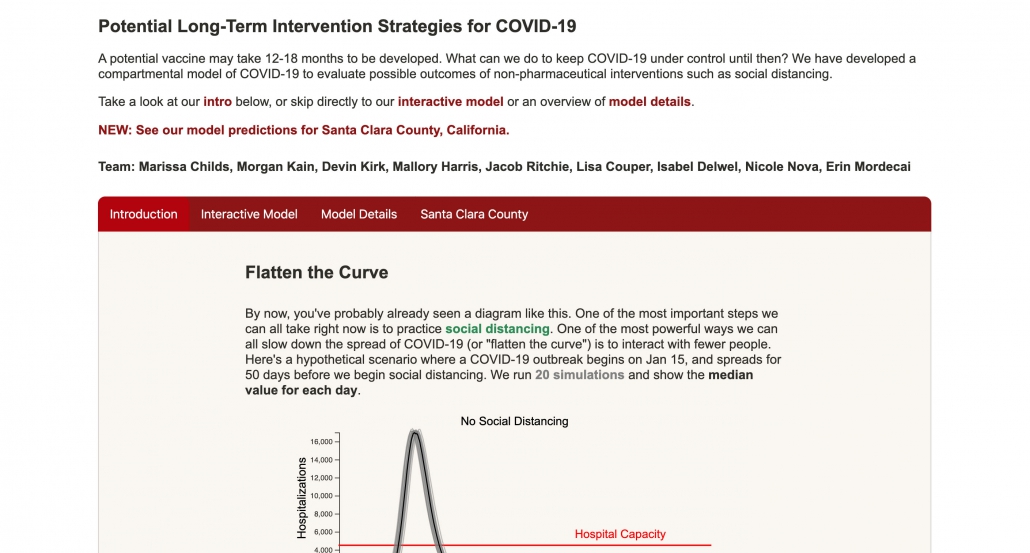COVID-19 researcher Erin Mordecai (BS ’07) named to 40 Under 40
Erin Mordecai (BS ’07), an infectious diseases researcher at Stanford University, was named to the University of Georgia 40 Under 40 Class of 2020. But this isn’t her first time making headlines this year.
As an assistant professor of biology, Mordecai studies how major human-caused global changes, like climate change, land use change or global movement, affect infectious diseases in humans and wildlife. Using innovative mathematical and statistical modeling, she seeks to understand how humans are changing the world and how those changes affect human health.
In March, as the nation came to a grinding halt due to the coronavirus pandemic, Mordecai saw an opportunity to contribute her expertise during a time of uncertainty. Mordecai led her team of infectious diseases researchers to develop a COVID-19 intervention model, which was then made available online. Her interactive website allowed users to model the spread of COVID-19 over time using non-pharmaceutical interventions, like social distancing and quarantine. During a time in which many government officials and members of the general public were not yet familiar with these strategies, her website was critical for communities in her region. Wary of the resurgence of the 1918 flu pandemic, when most major cities ended control measures within eight weeks, Mordecai wanted to help people understand the effectiveness of long-term strategies.
“Our model, and historical evidence, shows that fully lifting control measures at any point in the epidemic could lead to a second wave,” Mordecai said. “When you have a population where most of the people remain susceptible, fully returning to business as usual is extremely risky, and could result in many lives lost unnecessarily.”

Screenshot of the interactive website developed by Mordecai’s team. Source: https://covid-measures.github.io/.
As communities continue assessing how long social distancing measures need to be in place, Mordecai believes it is important to recognize how to prevent a resurgence, especially when a widespread vaccine is not available yet.
“There’s a lag of about three weeks between an intervention being lifted and its resulting effect on deaths,” Mordecai said. “Policymakers won’t be able to begin assessing the results of their actions until three weeks later, when the virus could have spread widely through the population.”
In order to prevent that problem, communities are developing processes to manage a potential second wave.
“There may be some potential to bring a second peak under control and respond more quickly if testing is sufficiently widespread prior to reopening and if it’s combined with rigorous contact tracing and infected isolation,” Mordecai said.
There is a light at the end of the tunnel for communities eager to return to normalcy. However, communities must be prepared to move to a test-and-trace system, in which testing is widespread and those who encounter sick individuals are isolated. They also must be able to intensify and relax social distancing and quarantine measures based on the number of hospitalizations and deaths.
“Our work shows that we could considerably relax the level of social distancing we’re practicing in the general population if we could more comprehensively test all symptomatic and high-risk individuals for COVID-19 and isolate them to prevent transmission,” Mordecai explained.
Mordecai’s model has become a useful tool for San Francisco Bay Area public officials as it allows them to compare different strategies, while seeing how their policies now will affect their options down the road.
At UGA, Mordecai was a Foundation Fellow, a Ramsey scholar and an honors student, earning an honors interdisciplinary studies degree in mathematical biology. She went on to earn her Ph.D. at the University of California, Santa Barbara.
“Fortunately for me, UGA remains a world leader in the ecology of infectious disease, and these deep research connections continue to bring me back to campus at least once a year,” Mordecai said.









 from CED archives
from CED archives